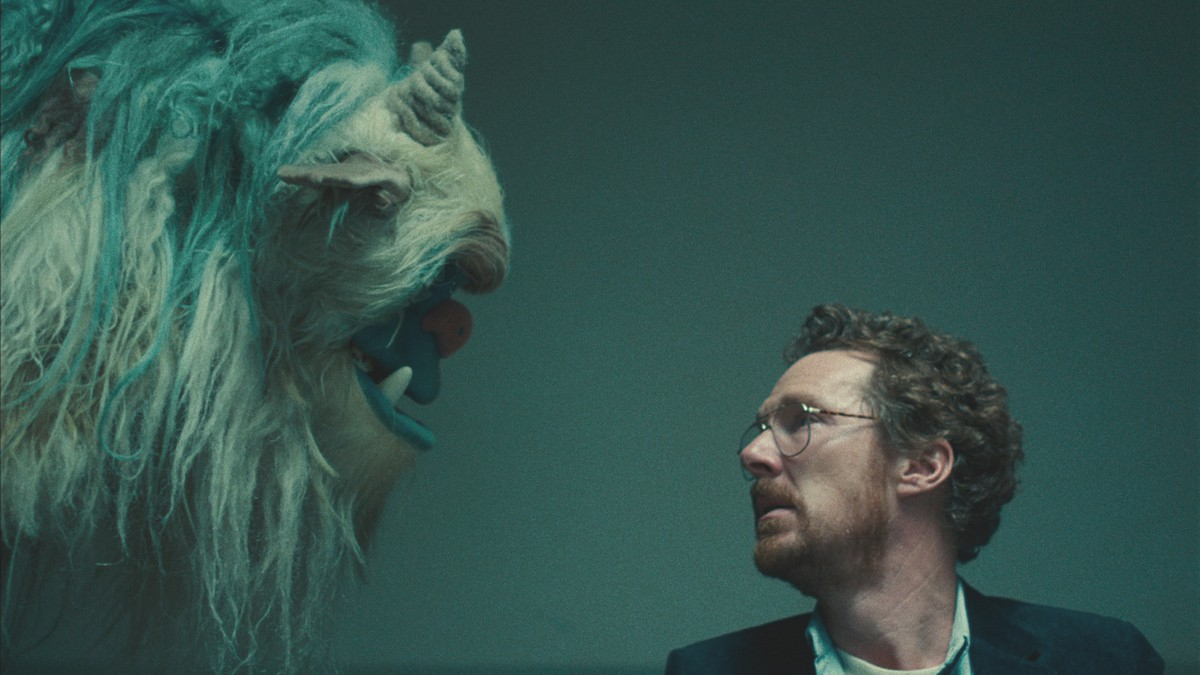Warning: The following article contains minor spoilers for Netflix’s Eric.
Starring Benedict Cumberbatch and McKinley Belcher III, Netflix’s Eric is a quirky thriller set in New York City in 1985. Given that the show tells a realistic crime investigation and reflects a specific historical moment, is Eric based on a true story?
In Eric, Cumberbatch plays the role of Vincent Anderson, a puppeteer who has a history of alcohol and drug abuse. Vincent starts to spiral down after his son, Edgar (Ivan Morris Howe), goes missing. The puppeteer feels responsible since Edgar’s vanishing coincides with Vincent having one of his shouting matches with his wife Cassie (Gaby Hoffmann). To fix all his mistakes, Vincent convinces himself to turn Edgar’s drawings of a monster named Eric into a real character of the popular children’s show he created, Good Day Sunshine.
While Vincent is battling addiction and guilt, Detective Michael Ledroit (Belcher III) tries to find the link between Edgar and Marlon Rochelle (Bence Orere), a 14-year-old kid who disappeared 11 months before Vicent’s son. In his search for the truth, Ledroit must navigate the underworld of New York City, where everything has a price, including underaged boys.
With two distinctive narratives, Eric isn’t always successful in finding its tone. Nevertheless, Vicent and Ledroit’s journeys help to paint a gritty and disturbing picture of New York in the 1980s. But what is fact and what is fiction in Netflix’s latest thriller series?
What’s real or not in Netflix’s Eric?
The central mystery of Netflix’s Eric is entirely fictional, just like its main characters. There was never a Good Day Sunshine puppet show, and both Vincent Anderson and Michael Ledroit come entirely from the imagination of writer and creator, Abi Morgan. Plus, while 1985 had several cases of disappearing children, no single case is too similar to Edgar’s and Marlon’s. Still, the show sometimes feels real because Morgan perfectly recreated New York City’s tense atmosphere in 1985.
Before Eric, Morgan has written The Iron Lady and Suffragette, two critically acclaimed movies set in specific historical moments. While The Iron Lady, Suffragette, and Morgan’s larger body of work stick to reality more than Eric, Morgan has used her vast experience researching to recreate a realistic version of New York City. So, while the series’ Deputy Mayor Richard Costello (Jeff Hephner) is fictional, Eric‘s political game revolves around the city’s homeless crisis in the 1980s.
In the 1980s, New York City saw a rise in its homeless population due to a harsh economic recession and the reduction of affordable housing. The number of people living on the streets also rose due to the deinstitutionalizing of psychiatric patients – these patients were often thrown on the streets without any support after leaving mental health institutions. These factors led to the creation of homeless camps in New York City, including in the underground tunnels that spread below the streets due to the subway and sewer networks.
Eric also reflects on the unfair treatment of Black people by police forces and the prejudice homosexual people suffered in the 1980s. Ledroit, for instance, must hide his sexual orientation at all costs. Furthermore, AIDS was still viewed as a “homosexual disease” in the 1980s, long before we understood how the virus propagated.
While Eric is a fictional story, it does draw from history to build its complex plot. Sadly, Eric’s grim reality is not too different from what we experience nowadays. We are going through a new housing crisis, the homeless population is increasing, discrimination against LGBTQ+ people is skyrocketing, and cases of police brutality against Black people remain common. So, it’s no wonder Eric feels so much like a true story.

